Razer’s DeathAdder gaming mouse line has seen plenty of iterations, featuring many branded models with wireless and wired variants. The Razer DeathAdder V3 is the latest in the line, sporting the ultra-lightweight and ergonomic build that the DeathAdder brand aspires to be recognized for. The DeathAdder V3 has currently has two wireless models in the form of the Razer DeathAdder V3 Pro and Razer DeathAdder V3 Pro Faker Edition. Today, we cover the base wired form of the Razer DeathAdder V3, which so happens to have the highest polling rate of the three DeathAdder V3 models.
Let’s dive into the $69.99 Razer DeathAdder V3 to check out what it brings to the table.
Razer DeathAdder V3 Base Specs
| Form Factor | Right-handed |
| Connectivity | Wired – Razer™ Speedflex Cable |
| Sensor | Focus Pro 30K Optical Sensor |
| Max Sensitivity (dpi) | 30000 |
| Max Speed (ips) | 750 |
| Max Acceleration (g) | 70 |
| Programmable Buttons | 6 |
| Switch Type | Optical Mouse Switches Gen-3 |
| Switch Lifecycle | 90-million Clicks |
| On-board Memory Profiles | 5 |
| Mouse Feet | 100% PTFE |
| Tilt Scroll Wheel | None |
| Approximate Size | Length: 128.0 mm / 5.00 in, Width: 68.0 mm / 2.67 in, Height: 44.0 mm / 1.73 in |
| Approximate Weight | 59 g |
Specs taken from product page.
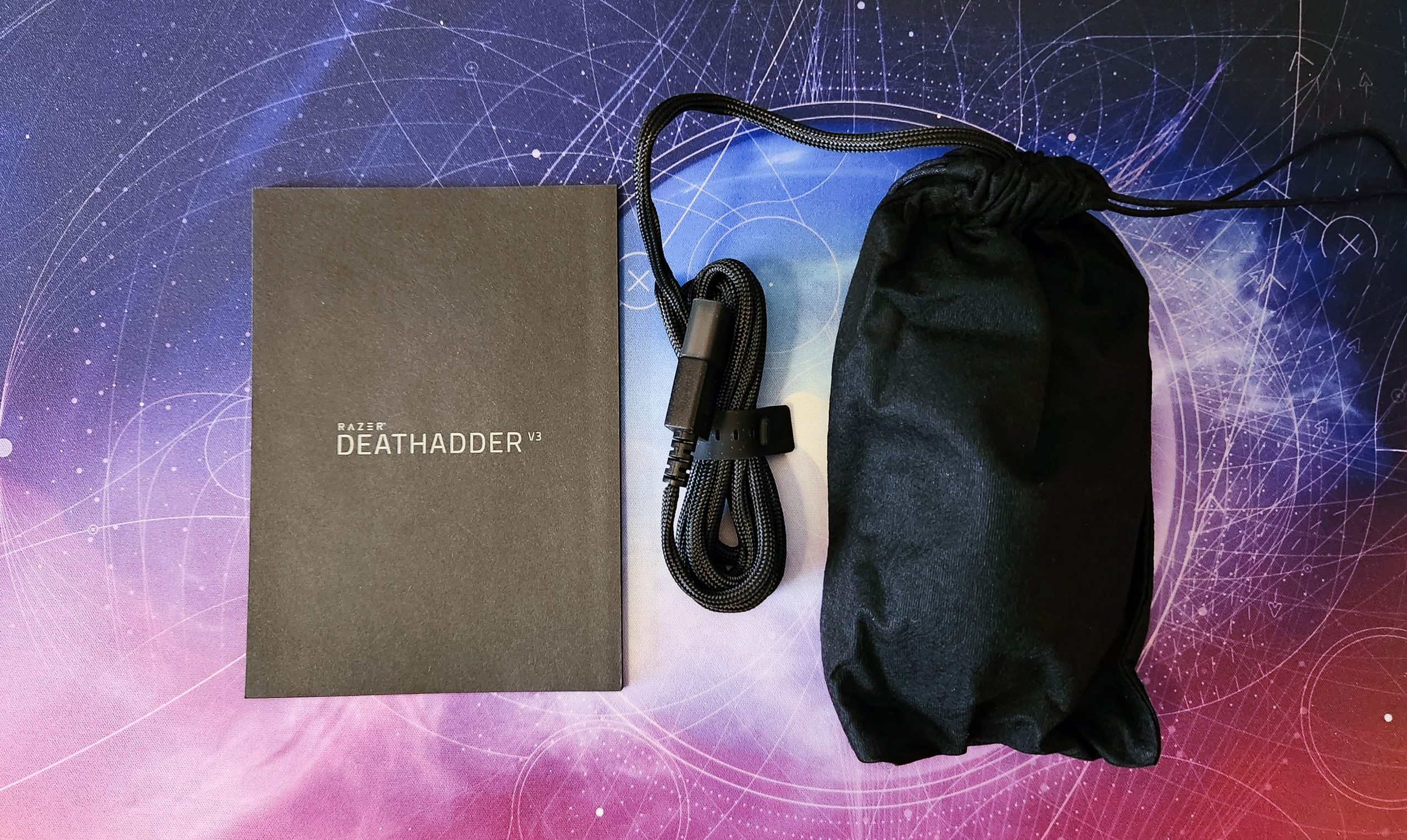
Build and Comfort
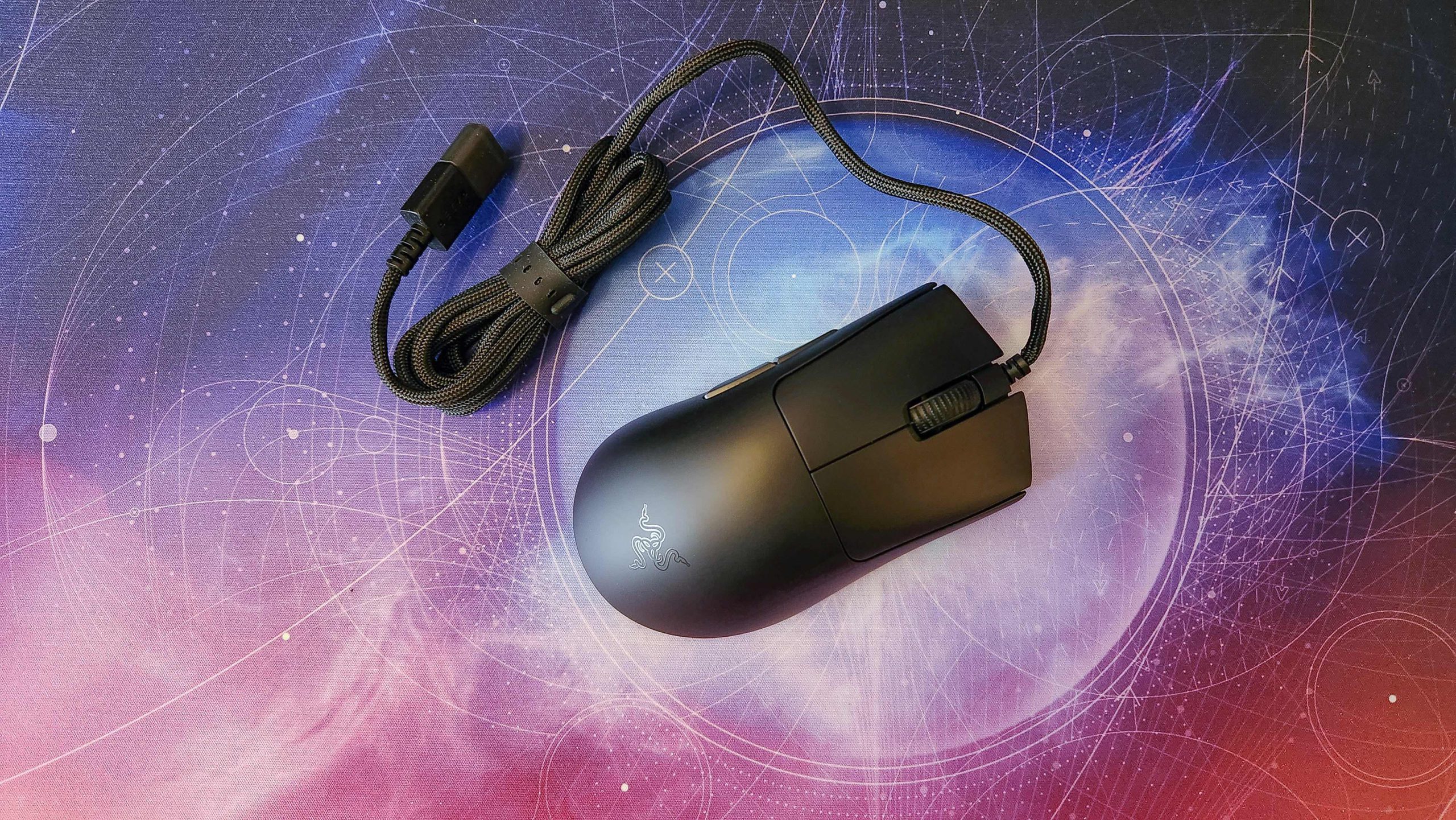
The DeathAdder V3 is a right-handed gaming mouse with six buttons and a revisited ergonomic design. In comparison with its previous DeathAdder predecessors, the DeathAdder V3 features repositioned buttons and scroll wheel, a raised arch, and a ring finger ledge on the right side. Weighing in at a feather-like weight of 59g, the DeathAdder V3 glides with ease thanks to its 100% PTFE mouse feet and Razer Speedflex cable.
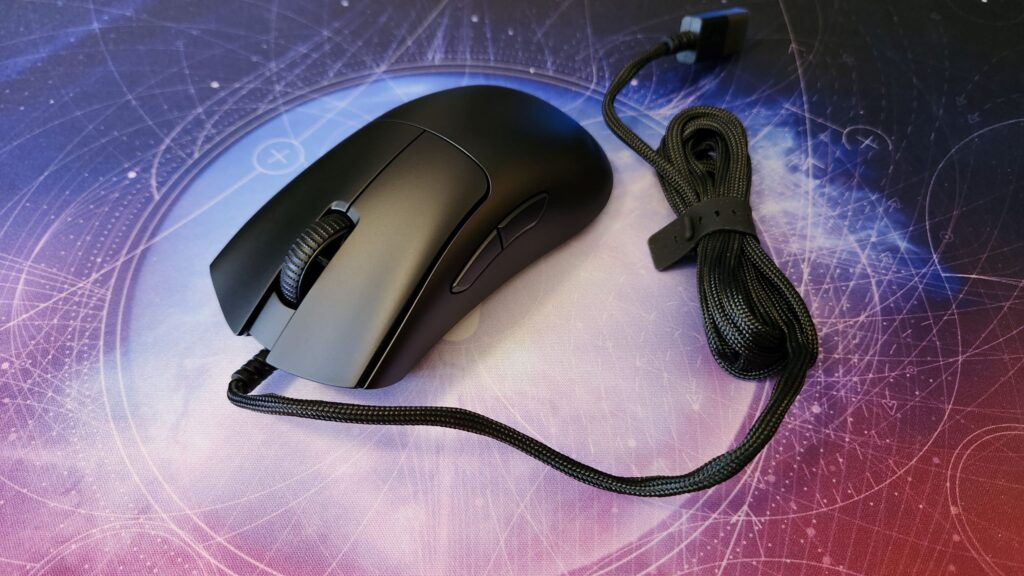
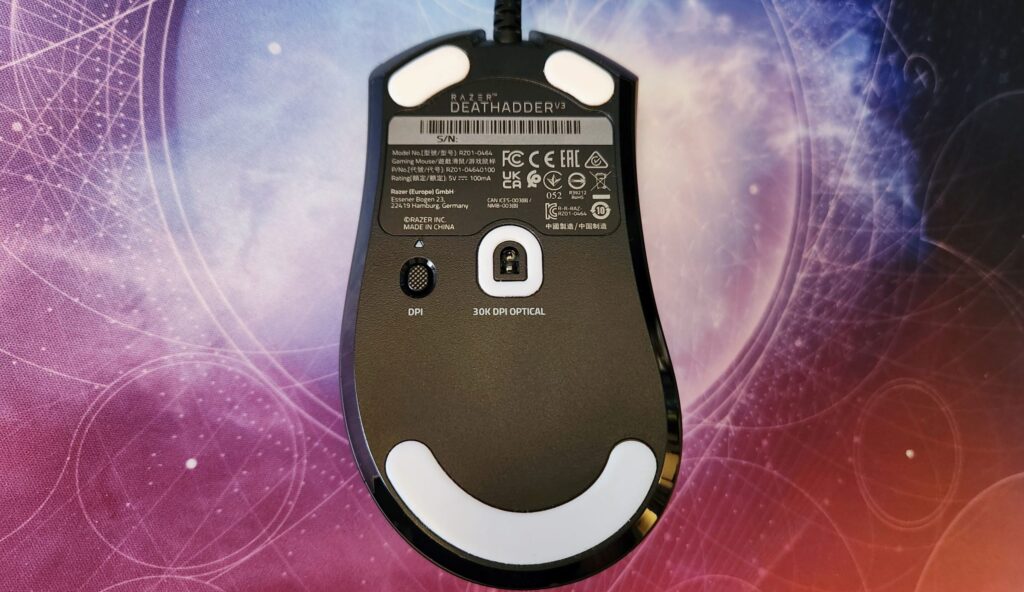
Starting with the top, you have left and right clicks as well as the scroll wheel and “mouse 3” button. On the left sits two thumb-side buttons while on the bottom you have a button that defaults as the DPI toggle. All these controls and more are customizable via the free Razer Synapse customization software. Custom remaps, DPI levels, polling rates, and lift-off distances can be saved into profiles and stored onto the mouse’s onboard memory. The mouse’s onboard memory can store up to five separate profiles.
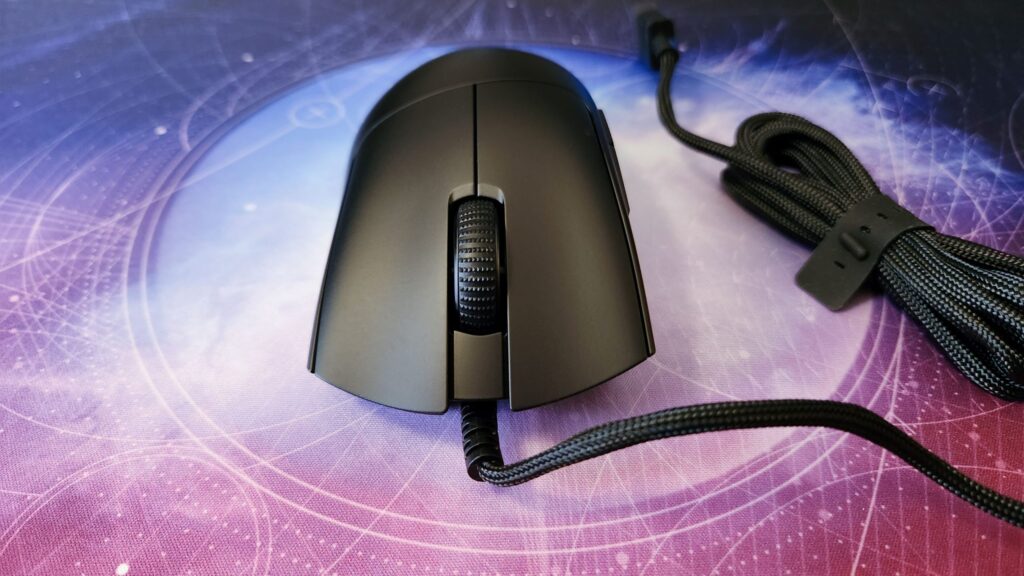

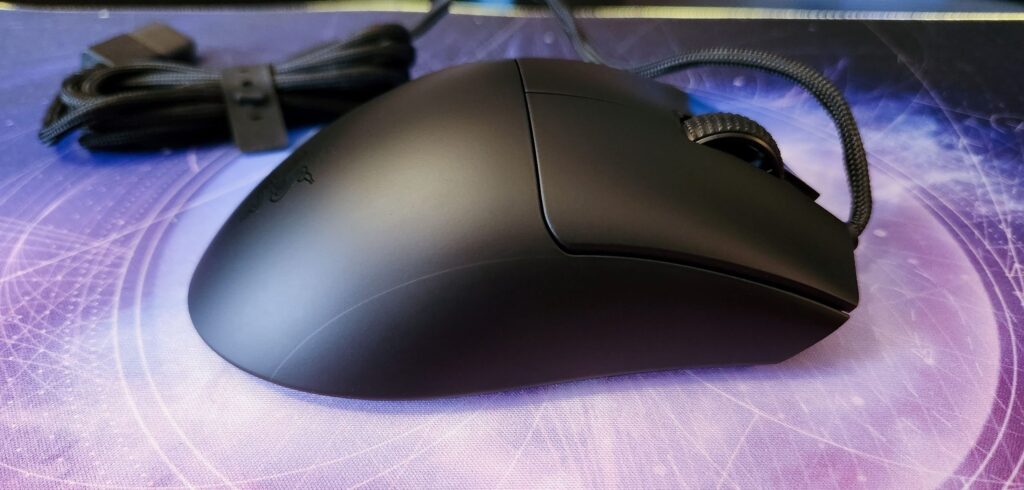
Driving the experience of the DeathAdder V3 gaming mouse is the Focus Pro 30K Optical Sensor, the third generation of Razer Optical Mouse Switches, and Razer’s 8K Hz HyperPolling Technology.
A product of Razer’s collaboration with Pixart, the Focus Pro 30K Optical Sensor tracks at a max DPI (dots per inch) of 30,000 at a max speed of 750 IPS (inches per second). That is an impressively high resolution of tracking at very high speeds. This sensor even sports an Asymmetric Cut-off feature, which allows you to set your mouse lift-off and landing distances to suit your particular needs and playstyle. Motion Sync then helps ensure consistent tracking while Smart Tracking allows the sensor to accurately ascertain lift-out distance across varying surface types.
The left and right clicks of this mouse house the new third generation of Razer’s Optical Mouse Switches. These switches use an infrared light beam to trigger actuation, allowing for a 0.2ms response time. Since these switches do not utilize physical contact to trigger actuation, you get accurate mouse click actuation and a switch lifespan of 90 million clicks.
While the Razer DeathAdder V3 Pro is impressive with its 4K Hz wireless polling rate, the wired DeathAdder V3 doubles that with its Razer 8K Hz HyperPolling Technology. With the level of tracking this mouse sensor provides and the speed at which the clicks actuate, you would want this data to reach your PC as fast as possible. With Razer 8K Hz HyperPolling, the wired DeathAdder V3 can transmit data to your PC with less than 0.125ms in click latency.
Thanks to its powerful sensor, fast and durable mouse switches, and impressive polling rates, the DeathAdder V3 is built to provide a smooth and responsive gaming experience.
The body of the DeathAdder V3 is lightweight and soft to the touch. Whether you employ a claw, fingertip or palm grip, the DeathAdder V3 is exceptionally easy to handle. While the finish on the DeathAdder V3 is soft and smooth, it is still a very tangible surface that allows for relaxed yet controlled gripping. The Razer Speedflex Cable also plays well into the DeathAdder V3’s handling experience. The cable stretches out close to six feet in length and sports a slick and flexible threaded covering that combats wire snagging quite well. Moreover, the DeathAdder V3’s light weight makes lifting and replacing the mouse feel effortless.
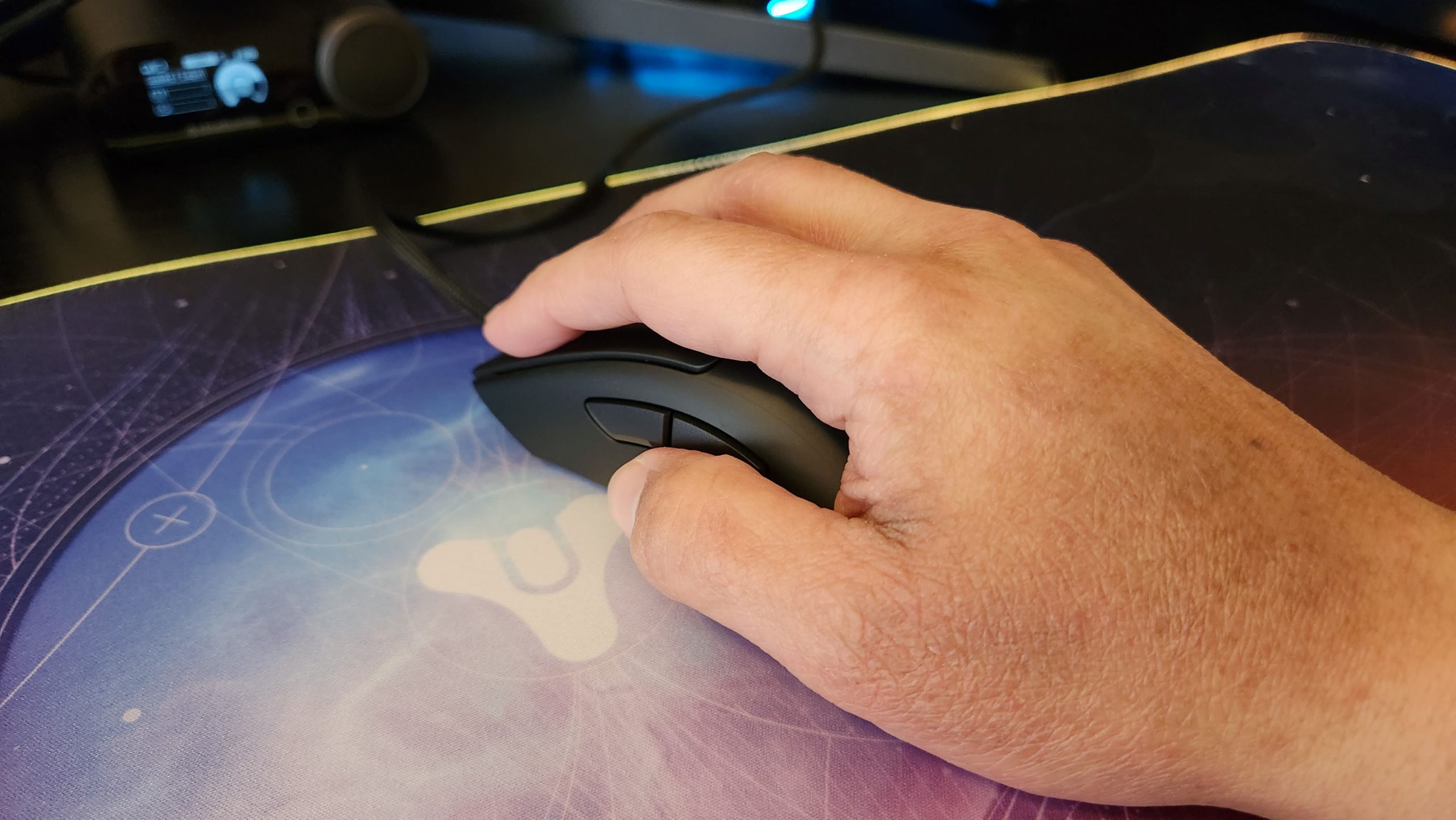
Before diving into the customization options available through Razer Synapse, the DeathAdder V3 impresses from right out of the box. At its base, it is a simple, comfortable, and accurate gaming mouse that gets the job done. At its default settings, the DPI toggle button gives you five levels of sensitivity (400, 800, 1600, 3200, and 6400). The DeathAdder V3’s default data polling rate is set at a very standard 1000Hz, which is well below the mouse’s maximum capabilities. However, even if you never touch the Razer Synapse software, you would not be disappointed with what the DeathAdder V3 brings you at the surface level.
Features and Performance
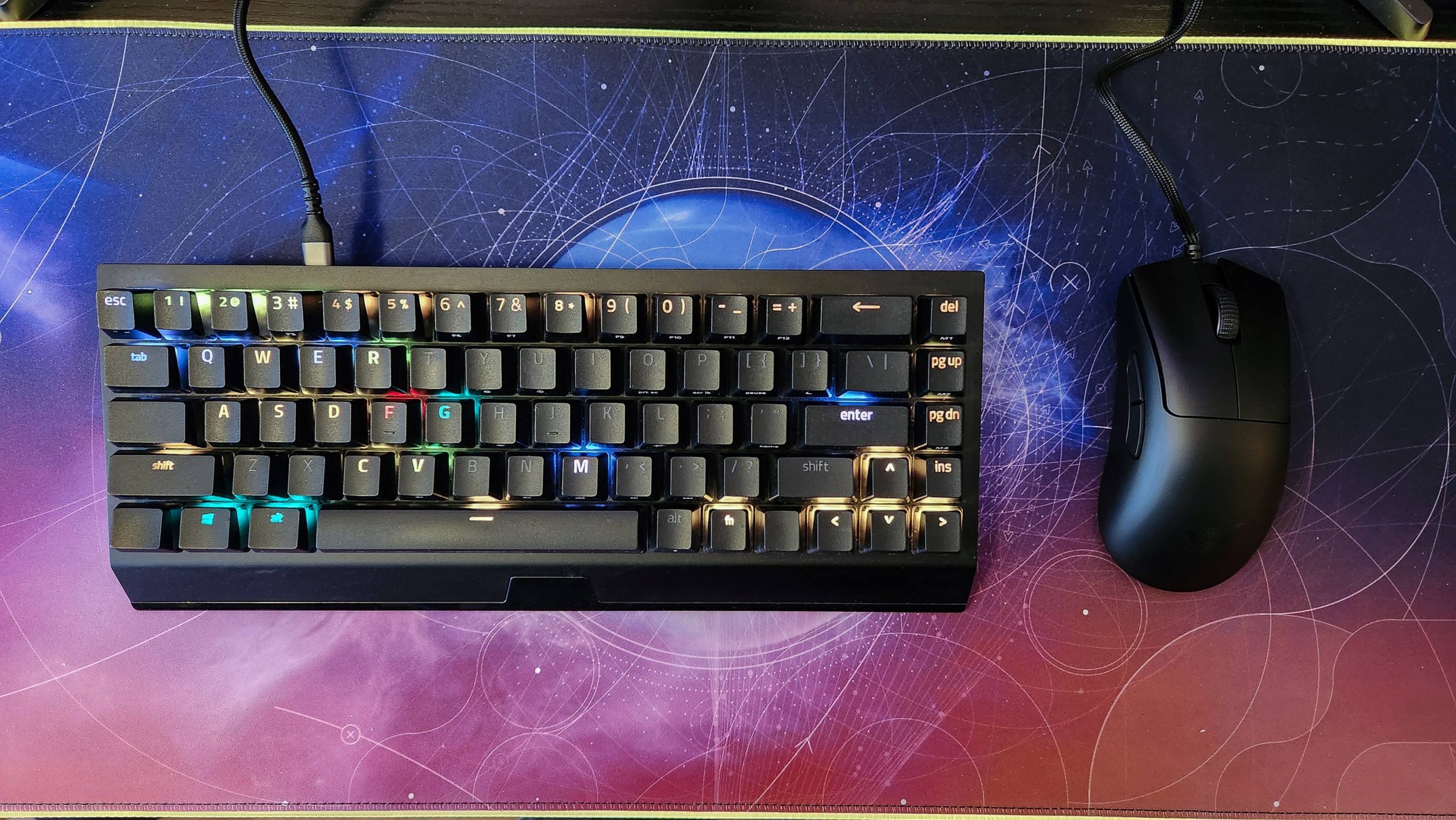
The Razer DeathAdder V3’s full power is unlocked through the free Razer Synapse customization software. As you would expect from any gaming peripheral customization suite, you can remap buttons, create and apply macros, and save your settings to profiles. Specific to the DeathAdder V3, you can adjust polling rates, customize sensitivity stages, and make tweaks to Smart Tracking and Asymmetric Cut-off.
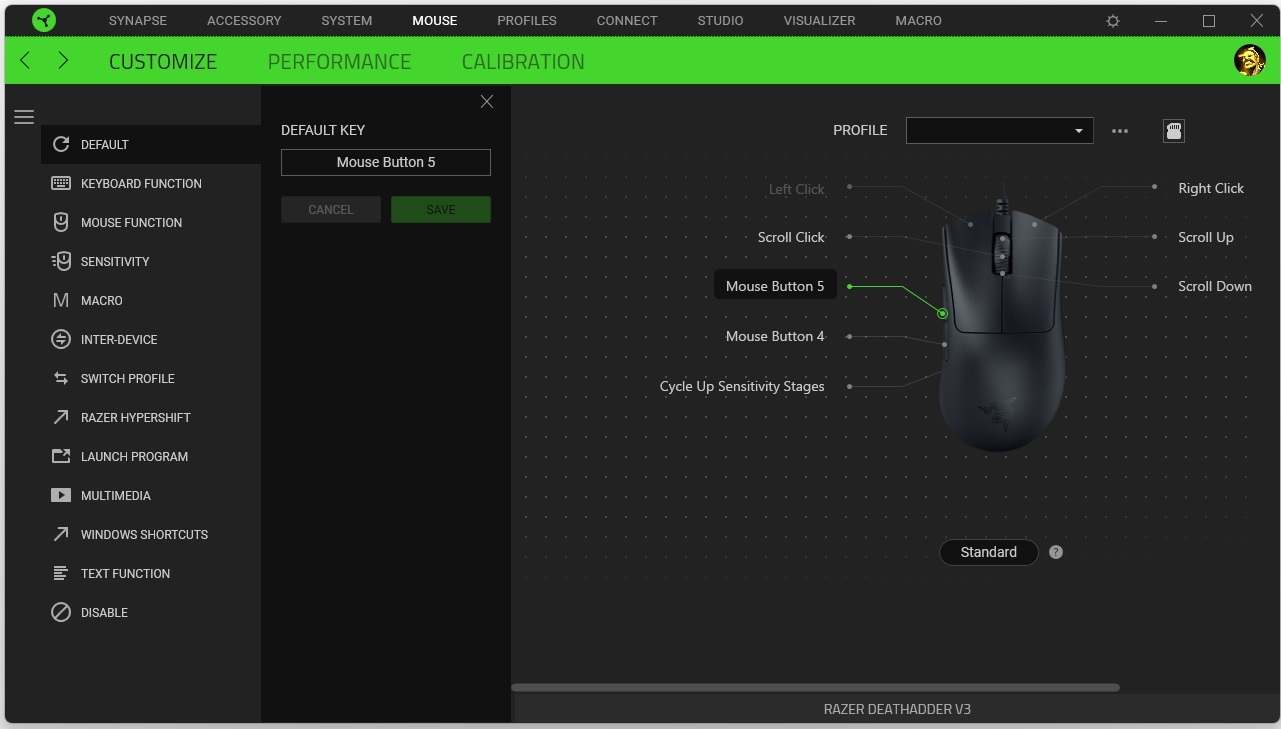

Overall, Razer Synapse provides a straightforward approach to managing the DeathAdder V3. If five sensitivity levels are too many for you to care about, as it was for me, you can reduce the amount of levels to toggle through. Of course, you can set your own preferred DPI settings for each level as well.
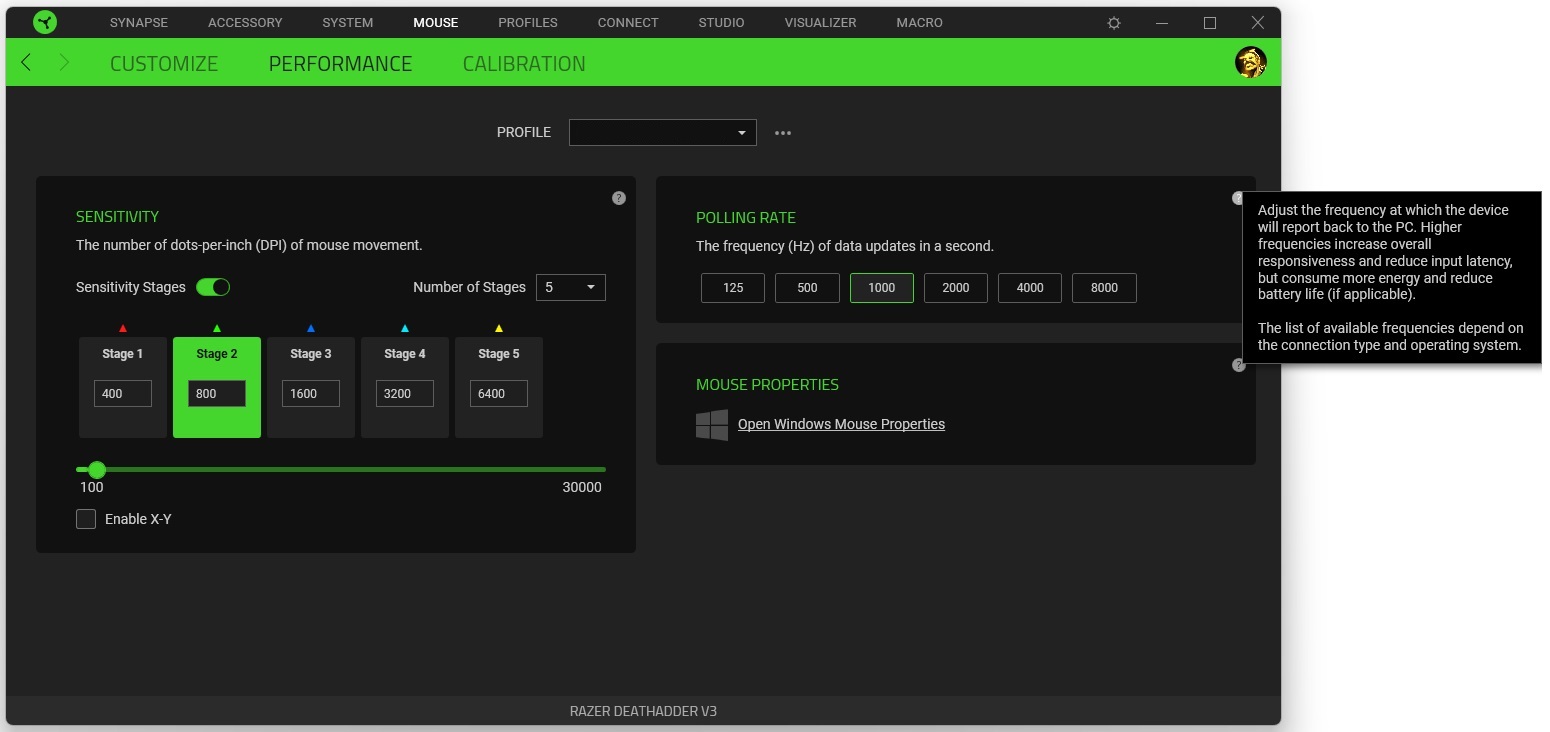
If you want to fine tune your lift and landing distances to suit your unique gaming surfaces, Smart Tracking and Asymmetric Cut-off are available for you to toggle as well. Each of the screens within Razer Synaspe feature helpful info sections that help you better understand each available setting.
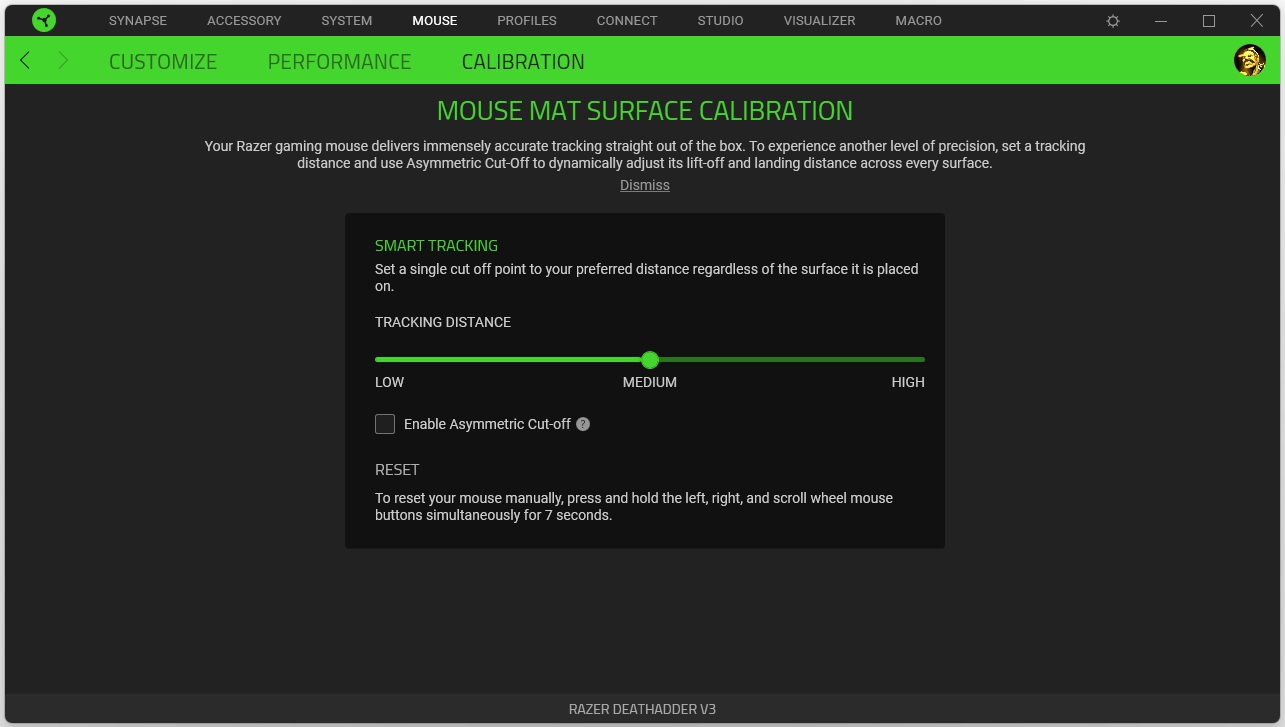
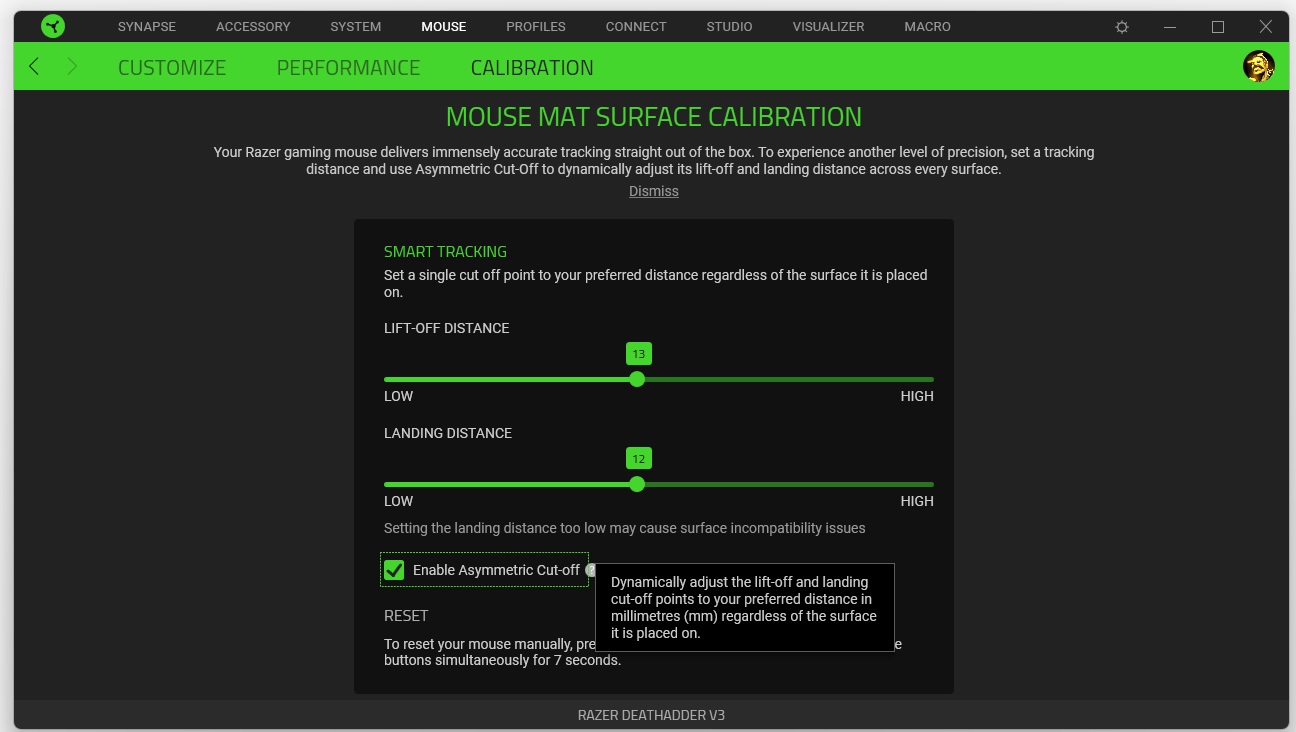
For my day to day and gaming usage, I found myself settling on just two DPI levels, 400 and 1600. I had the mouse on 1600 DPI as my default, toggling to 400 DPI only when I needed to edit and clean up some images I took for reviews or whatnot. I set the polling rate to 4000 and left Smart Tracking and Asymmetric Cut-off at their default “medium” settings. I did think it was a nice touch that the LED by the DPI button shines in the color of the matching DPI level in synapse.
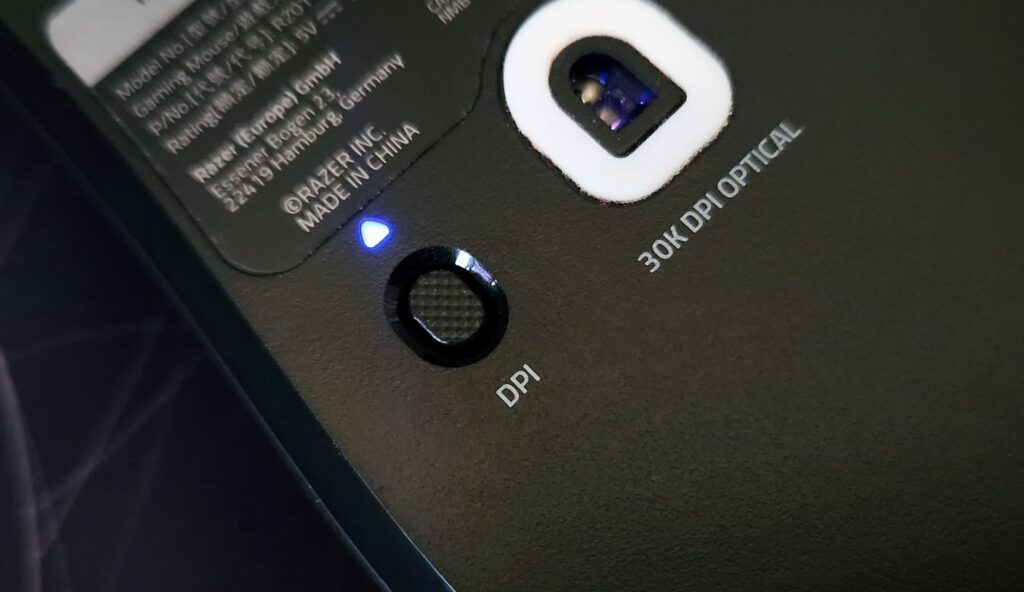
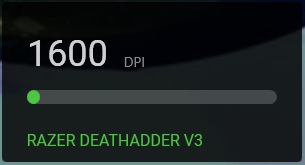
It is a handy indicator of what DPI setting is currently active on the mouse when you are using it on a PC without Razer Synapse installed. Otherwise, with Razer Synapse installed, you would also get an indicator in the lower right of your screen whenever you toggle your DPI sensitivity.
The tracking on the DeathAdder V3 felt excellent, both in and out of games. While gaming, I did notice that minor dip in frame rates that the Razer Synapse app warned me about when trying out the higher polling rates. At 2000Hz, Apex Legends ran between low 100’s and high 90’s in FPS (frames per second). Setting it to 4000Hz brought then brought the FPS to dance between 90 and 95. Overall, I was happy with the 4000Hz scenario as I just wanted to feel out the DeathAdder V3 when it was close to its best possible settings.
Staying in Apex Legends, I wanted to be in as many gun fights as possible while I tried out the mouse. So, I dove into Team Deathmatch and Control matches, rushing my opponents with Mad Maggie. Running EVA-8’s and Wingman hand cannons, mouse swipes and 180 turns felt nice and clean. The DeathAdder V3 handled well went from kill to kill with no hiccups whatsoever. Needless to say, I loved the results.

The DeathAdder V3 also played well in Destiny 2. I used it during last week’s Iron Banner as well during my first “flawless” Trials of Osiris run of the season, weeks ago.

While using the then-overpowered “The Immortal (Adept)” SMG was not much of a test of this mouse’s accuracy, using the “Phyllotactic Spiral” pulse rifle was. I was impressed with how well I was able to handle this crafted pulse rifle in long range fights with the DeathAdder V3.


All in all, the DeathAdder V3 handled impressively well, allowing me to keep up with my competition in any first person shooter I used it in.
Final Thoughts

As far as wireless mice have come in transmission rates, polling and responsiveness, there is still a strong following of gamers that will always stick with wired mice. If you fall into that bucket, then the Razer DeathAdder V3 is definitely a mouse that is worth checking out. For an approachable price point of $69.99, you get a powerful mouse with a no-nonsense optical sensor, a comfortable lightweight design, and a level of responsiveness that any pro gamer would love. Its default settings are perfect for any gamer that wants a high grade mouse that they do not want to spend time tweaking. While at the same time, your more detailed or involved gamers have the kind of customization options that they would expect through Razer Synapse. It is a solid mouse that gets the job done from the moment you take it out of the box.
If you are interested in checking out the Razer DeathAdder V3 wired gaming mouse for yourself, you can do so by clicking here.

† There are no affiliate links contained within this post. We were provided a Razer DeathAdder V3 for Android for review purposes and were not compensated for this review.




